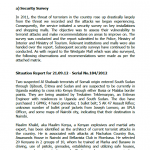In the wake of Fouad Mourtada’s conviction for impersonating Prince Moulay Rachid on facebook.com, Moroccan bloggers have voiced concern that his arrest sets a precedent for repressing bloggers who were formerly allowed to flourish. In contrast to the outpouring of sentiment on the Internet, Morocco’s mainstream press has thus far displayed only limited attention to the case. Moroccan security services arrested Fouad Mourtada, 26, an IT engineer from the southeastern town of Goulmima, on 6 February for creating a facebook.com profile in the name of King Mohammed VI’s brother, Prince Moulay Rachid on 15 January. Mourtada’s defenders argued that he clearly had no malicious intent since he used his home IP address instead of a cyber cafe and also argued that he did not expect his posting to be taken seriously since there are so many false celebrity profiles on facebook.com (French President Sarkozy has 41). Nevertheless, on 22 February, Mourtada was sentenced to three years in prison and a fine of 10,000 dirhams (approximately $1,350) (helpfouad.com). Beginning with prominent French-language blogger Larbi el Hilali on 7 February, Moroccan bloggers have charged that Mourtada’s arrest and conviction portends a government crackdown on Internet free speech.
Read more →

